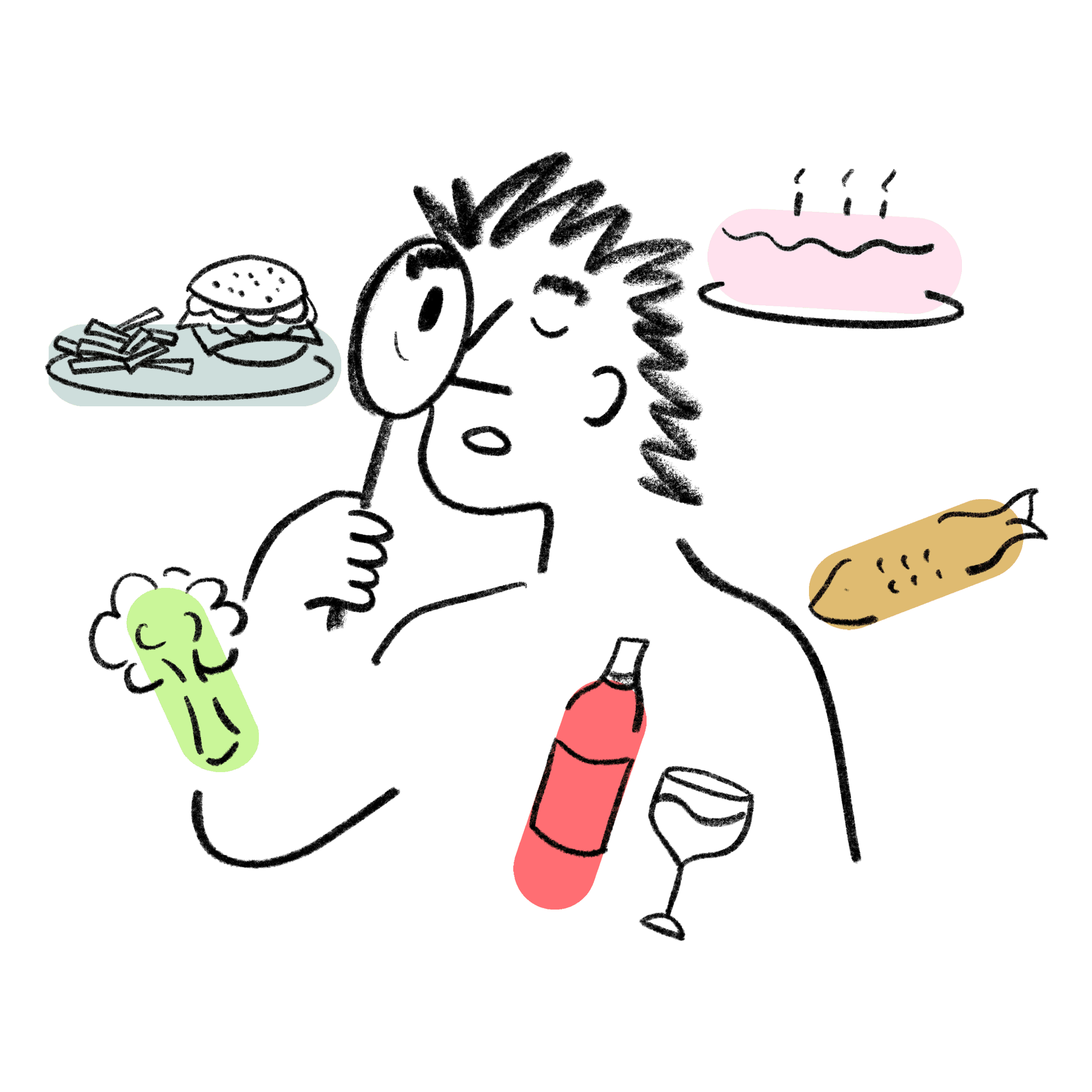An effective solvent that can be added for flavor or texture purposes in cooking.

What are the fundamentals of alcohol?
Although alcohol is not a primary nutrient like fat, protein, or carbohydrates, it still provides energy in the form of calories. Alcohol molecules are usually a by-product of .
From a culinary perspective, alcohol can act as an important flavor booster or solvent, and even manipulate texture in food or drink.
- For example, vanilla extract contains ethanol to fully dissolve and carry the aromatics of vanilla beans.
- Alcohol is added to batters since it faster than when , leading to foods.
Lastly, alcohol is enjoyed primarily in drinks — for its own flavor or as a food pairing.
💡 Energy: 7 calories per gram
🧪 Alcohol-related reactions:
🛠 Alcohol-related techniques:
Alcohol-related foods
- Fermented drinks like kombucha or beer
- Vodka sauces
- Beer battered fish
- Red wine pan sauces
- White wine vinegar, apple cider vinegar, etc
How does alcohol affect the elements of flavor?
In order of importance:
— Because of its solvent properties, alcohol releases complex aroma molecules in other ingredients. In the case of vodka sauce, the ethanol releases additional fruity esters (aromatic molecules) in the tomatoes. Alcohol can add fermented or malted aromas from its production process, or distinct infused flavors, like juniper berries in a gin.
— In baked goods or batters, alcohol can make for a crispier or lighter texture because ethanol evaporates more readily than water, leaving lots of air pockets. In mixed drinks, spirits have a different viscosity and mouthfeel than water. For example, a chilled martini is more viscous than room-temperature vodka.
— Alcohol molecules, most commonly ethanol, taste slightly sweet and bitter by themselves. Usually, these tastes are overwhelmed by the aromas of what the alcohol is made of (grain, fruit, etc.).
—Alcohol has a psychological effect on our brains, which changes our perceptions of food and our surroundings. High-proof alcohol “burns” when sipped. Why? It increases the temperature sensitivity of the pain receptors in our mouths, which register our body temperature as hot and burning in the presence of ethanol.
— Alcohol or drinks can change the experience or ambiance of a meal, thus altering our perception of a dish. Different cultures have different traditions or associations with alcohol and its relation to food.
— Alcohol can change the color of a dish (think red wine braised short ribs), which changes our perception of food. In a cocktail, the presentation of a drink can change our perception too. Likewise, the packaging of a can or bottle — or if something is decanted into a beautiful glass, can change how our brain enjoys the drink.

The Mouthful
Become a smarter home cook every Sunday
Join 60,000+ home cooks and get our newsletter, where we share:
- Recipe frameworks & cooking protocols
- Food trends explained
- Meal recommendations
- Q&A from expert home cooks
We hate spam too. Unsubscribe anytime.

